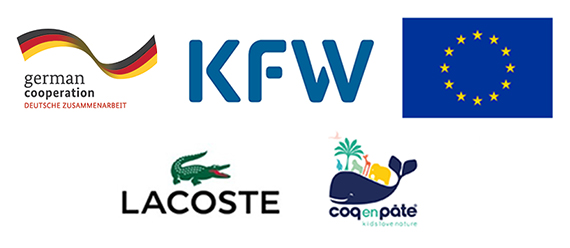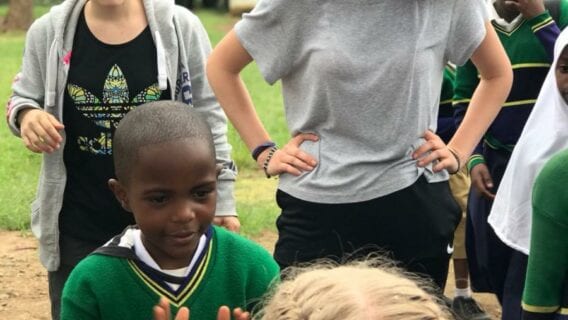A Year of Incredible Species Action

We can only save species if we collaborate. Through the hard work of our grantees, advice from IUCN’s many species experts and the support of our incredible donors and people like you, 2019 has delivered great impact for species threatened with extinction.
Here are just a few of the highlights:
Supporting increases in species populations.
We have been supporting Tiger conservation for five years. The global population is now estimated at just under 4000 wild individuals, with increases seen in ITHCP sites particularly in Bhutan, Nepal and India and reliable population estimates for Myanmar and Indonesia. In 2019, the Indian government announced that its tiger population had increased by a third in just four years to almost 3000 individuals.
Investing in protecting new species.
We announced that over the next 3 years, we will dedicate more than $1.1million to new initiatives aimed at protecting the Goitered Gazelle and Snow Leopard in Kazakhstan, Kyrgyzstan, Tajikistan and Uzbekistan, as well as all 20 species of Gibbon across South and Southeast Asia.
Responding to multiple conservation emergencies.
A lack of calcium caused wing and foot deformities in Cape Vulture chicks in Botswana. Unable to fly, chicks starved to death. Alerted to the situation, we started supporting urgent conservation action to deliver bone fragments to key feeding sites. Initial results show that vultures are feeding more than expected. The impact on chicks will become evident in the new year.
Reducing poaching.
All six Lemur projects involved in law enforcement reported a decrease in poaching, traps number or logging. In Malaysia, a new grantee working to protect Asian Elephants made a big impact in its first six months: the Wildlife Crime team patrolled over 2,000 km observing or removing 117 snares and arresting 17 poachers.
Reducing human-wildlife conflict.
Five of the Tiger projects (ITHCP Project portfolio snapshots.pdf) have a major focus on reducing human-wildlife conflict and all projects are factoring conflict management into their long-term conservation plans. In central India for example, the equipping and training of primary response teams enable trained staff to be in situ managing interactions between animals such as tigers, leopards and bears, and local communities within minutes, reducing the likelihood of animals or people being injured. Furthermore, in Tanzania, a grantee works with local Warriors who managed 325 human-wildlife conflicts over the course of the year and prevented nine retaliatory killings of Lions.
Protecting habitats.
With about 40% of Madagascar’s original forest cover lost between the 1950s and 2000, reforestation is crucial to protecting all species of lemurs and a priority for many of our grantees. Since 2017, they have planted more than 2.7 million trees to improve lemur habitat across the island.
Working with local communities.
All of our grantees work closely with neighbouring local communities, as without their help it is not possible to protect threatened species. In Tanzania, a Women’s Beekeeping Initiative helped equip local women with new skills and income opportunities, while protecting key habitat for wildlife.
Engaging young people in conservation.
In Madagascar, one grantee engaged over 1,500 students in lemur conservation through camps and by sharing an original Malagasy-English children’s book. They also worked with more than 100 teachers through leadership training.
Funding ground-breaking scientific studies.
One study maps out the use of high altitude habitats by tigers, (Status of Tiger Habitats in High Altitude Ecosystems of Bhutan, India and Nepal.pdf) against a background of existing land use patterns by local communities. With climate change, understanding this biome and managing it for long-term conservation will be of increasing importance. Another study commissioned looked at the range of different human-wildlife conflict strategies, techniques and methods adopted by the different projects within our portfolio. A report will be published in 2020.
Collaborating with fashion brand Lacoste to raise awareness of the plight of species close to extinction.
As part of our three-year partnership with Lacoste, we funded our first project focusing on Burmese Roofed Turtles. It is estimated that there are only 40 individuals remaining in the wild. Egg-citing news came early: 51 Burmese Roofed Turtles hatched, marking a key moment for this Critically Endangered species.
Speaking up for species.
In the Abu Dhabi call for Species Conservation Action, released in October 2019, over 300 species experts from across IUCN called for governments, international agencies, the private sector and the general public to commit to halting species decline by 2030. Thousands of you joined us in spreading the call on Social Media via #SpeciesActionNow.
A huge thank you to everyone who supported species conservation in 2019. Thank you for your dedication and the messages of hope you share with the world and us every day. Together, we can make an even bigger difference in 2020.
Thank you also to our incredible donors and partners, without whom the above achievements could not have happened.




